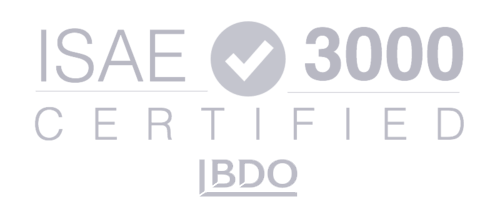From getting contracts and documents signed, getting the schedule ready, giving access to all the systems you use, ordering possible uniforms to all the things that a new hire needs to learn. In this post, we have gathered some of the most important retail onboarding tips.
Why onboarding matters
The retail industry has one of the highest employee turnover rates of all industries. Half the of the retail hourly workers leave within the first four months. Deloitte’s 2022 Retail Industry Outlook also shows that 70% of retail leaders have a shortage of employees and that this is one of their biggest challenges this year.
Because of this, it’s extremely important to ensure that new hires settle into their jobs quickly and make them want to stay. If employees feel well received, they are more likely to perform faster and stay longer in the workplace.
Luckily, there are things you can actively do to make them feel welcomed and wanting to stay. For example, by giving new hires a great onboarding. Through a structured onboarding you can:
- Reduce staff turnover (new hires are 58% more likely to stay more than three years IF they have a structured onboarding process)
- Accelerate and improve the performance of new employees
- Increase job satisfaction & organisational commitment
Onboarding of new employees in the retail sector
When we at Learningbank talk to our customers in retail, we see that starting the onboarding process early – even before the first day of work – has many advantages. This is called a preboarding.
We recommend all companies to take the opportunity to create an early bond with their new employees and prepare them for their new roles properly.
What to keep in mind for the preboarding & onboarding
- Communication. The preboarding process should start as soon as the prospect has said yes to the job. Don’t let your new talent slip away cause of bad communication. Automating a lot of communication is a good time-saver. Use a workforce management system combined with a good learning platform to help you make sure the communication goes smoothly from the early start and throughout the entire employee lifecycle.
- Blended Learning. Training is essential before jumping straight to the tasks. A mix of a digital introduction to the tasks and practical training on the floor is great practice during the onboarding process and will make your new staff feel more secure and comfortable.
- Vision, mission and company culture. Provide an overview of your company’s vision, mission and culture by sending out a digital preboarding no later than 2 weeks before your new hires first day. By making it clear to your new employees what role they play in it all, you’ve already taken the first step to creating employee engagement and loyalty. Adding a fun video with introductions to the team members will definitely drum up that excited feeling of get started even more.
- Service & sales skills. Whether in the store, or another part of the retail industry, service and sales skills are often important parts of the job, and it’s a good thing to include some guidelines or basic trainings in the onboarding process.
- Company policies & procedures. Do you have specific guidelines in how you treat your customers or guests or maybe important opening and closing procedures? Then why not introduce some of them already in the preboarding? For some stores, hygiene training can also be a good part to include at the beginning.
- Remember the technical stuff. Give a digital introduction and explain briefly how the systems that your employees will use for work. This saves you time and gets your new hires more comfortable once they’re on the floor for the first shift. Whether it’s the time schedule system or using the cash register, you can easily give employees an introduction by sending out bit-sized learning from your LMS or Learning Lifecycle Platform in form of video or interactive trainings.
- Assign a mentor (or two). Ideally, you should appoint a mentor for the social aspect of the company and one that the new hire can turn to for guidance on work tasks. The idea is that the mentors should not be a manager, but someone who is there to answer questions that you may not always want to ask your boss about and to facilitate the integration process in the new working environment.
- Align on goals. Making sure you are on the same page when it comes to development and goals early on will help reduce possible friction in the future. Setting the goals and making a plan for how to reach them together also shows that your new workers are of importance to the company and will make them feel included and welcomed.
Save time with a digital learning platform
Using a digital learning platform, you can automate the pre- and onboarding processes with ease. It will allow you to shorten administrative work at the same time as it enables your employees to access their onboarding and trainings whenever suits them the best.
Usually, your learning management system can be integrated with your other HR systems such as your communication platform or workforce management system. By using integrations, you let your systems speak with one another. This means that when adding your new employees to your HR system, they are automatically sent to your other systems as well.
Sources:
- The Society for Human Resource Management (SHRM)research- SHRM Foundation’s Effective Practice Guidelines Series, Talya N. Bauer, Ph.D Sponsored by Right Management, Onboarding New Employees: Maximizing Success
- Deloitte’s 2022 Retail Industry Outlook
- Learningbank, Onbording Guide 2021
About Learningbank
Learningbank is a user-friendly Learning Lifecycle Platform that helps companies create engaging onboarding & training of employees that save time and improves workforce performance.

